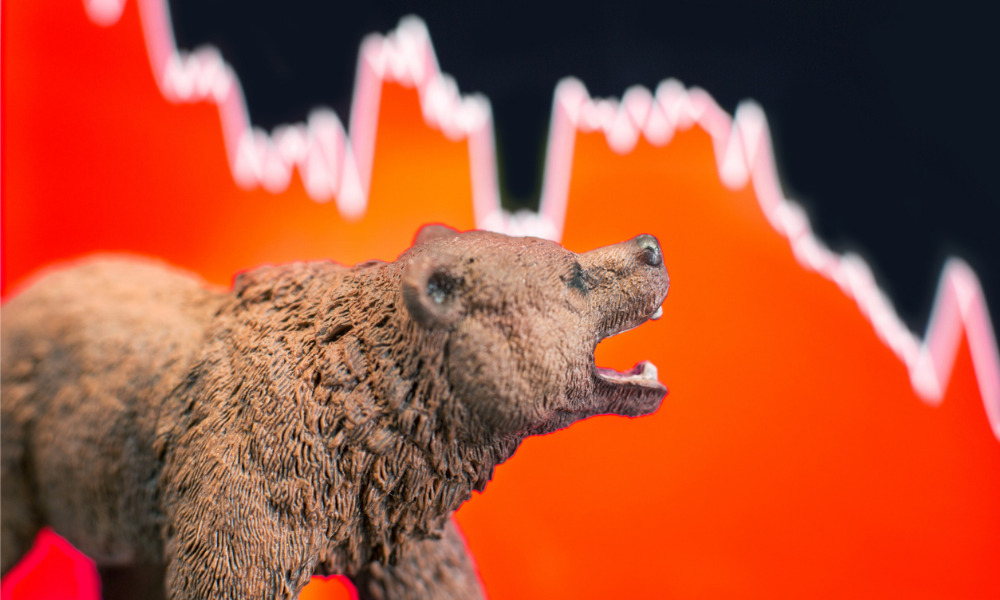Market downturn correlates with economic downturn’s depth and severity

With the Federal Reserve expected to raise interest rates significantly today to try to control rising inflation, and the Bank of Canada having already moved its rates higher, the markets are solidly in the claws of a bear market with concerns raised by those watching what’s happening in the world.
The S&P 500, Wall Street’s main health barometer, slid 3.9% this week. That’s 21.8% below its record, set earlier this year, now placing it in a bear market. The Dow industrials sank 2.8% and the tech-heavy Nasdaq composite, already in a bear market, tumbled 4.7%
“There have been some bear sightings in other parts of the world. Most notably, the MSCI China Index has fallen more than 20% this year, and we have also seen bear markets in Russia and eastern Europe,” Kristina Hooper, Invesco’s chief global market strategist said. “Other major indices have experienced significant corrections, too.”
A bear market is the term that Wall Street uses when an index – like the S&P 500, Dow Jones Industrial Average, or an individual stock –falls 20% or more from a recent high for a sustained period, signalling a retreat, such as when bears hibernate. That stands in contrast to bull markets, so named because bulls charge.
The last bear market happened two years ago when the S&P 500 index fell 34% between February 19 and March 23, making it the shortest bear market ever.
Hooper said, even though the last three S&P 500 bear markets were followed by recessions, a bear market does not necessarily foreshadow a recession. It didn’t after the 1961, 1966 or 1987 bear markets.
Typically, she said, a bear market’s depth and length will also “somewhat correlate” with an economic downturn’s depth and severity. The S&P 500 bear market of 2020, for instance, lasted less than two months and the 2020 recession was very short, as well. On the other hand, the 2007-2009 bear market, when the S&P 500 Index dropped 56%, proved to be a leading indicator of the severe global recession from 2008 to 2009.
“We know that every S&P 500 bear market has been followed by a recovery that has taken the index to new highs,” she added. “The caveat is that sometimes that recovery can take significant time.”
While bear markets can offer opportunities to buy, investors now are reconsidering what they’re willing to pay for a wide range of stocks, from tech companies to traditional automakers. The “buy the dip” rallying cry after every market slide has weakened amidst the losses and severe plunges in risky assets like cryptocurrencies. Bitcoin fell from $68,000 late last year to below $23,000 Monday.
While analysts are also beginning to see a shift in consumer behaviour as more stocks are impacted, advisors continue to recommend not dumping stocks now as many of the market’s best days have occurred either during a bear market or just after the end of one. So, getting out now would prevent potential gains, but advisors also suggest only putting money into stocks if you won’t need it for several years because stocks usually regain their highs within a few years.
Hooper warned that there could still be more volatility – and sell-offs – with the Fed’s quantitative tightening. But, she said, “any weakness should offer entry points for dollar cost averaging”.



